Maintaining your bike regularly and equipping it with safety gears for the terrain and conditions that you are biking in, help you stay in control and execute safe behavior that we discussed in the previous article. Here, we will present you with various biking gears that help you stay safe on the ride.
Check your bike before every ride. Before every ride, check that your tires are inflated, your brakes can stop you, and your wheels are properly attached to the bike. If you’re unsure, take the bike to a shop and have them look it over for you.
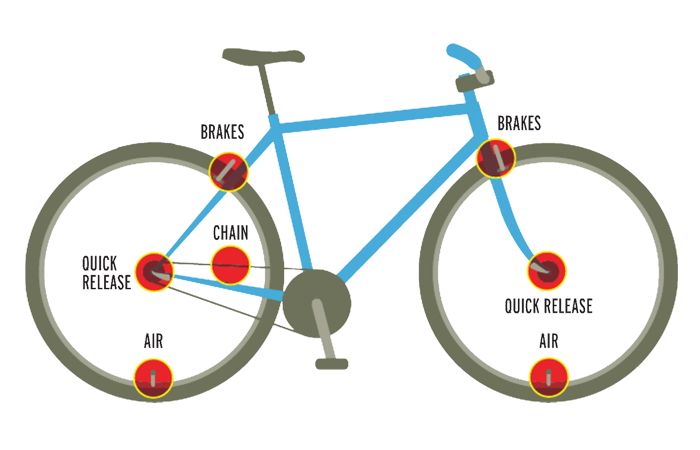
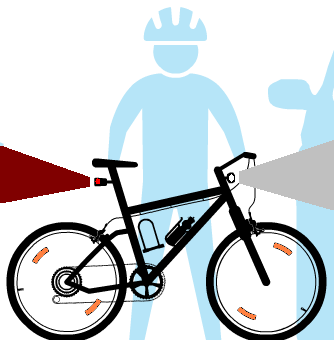
Be visible by wearing the brightest clothing you can find and adorning your bike in lights so it’s visible from all angles.
Avoid flashing lights, which seem to be only useful during bright conditions with under-powered lights or as a way to extend the runtime of battery-powered lights. Leave the lights on during the day. The best option is a dynamo-powered light that throws out a light pattern like a car’s headlights do, but you might need to build your own bicycle wheel to set one up. Use as many reflectors as you can fit. Put reflective tape on the back of the rear fender, helmet, and wherever else it seems appropriate. Add wheel reflectors and find tires with a reflective strip on the sidewall.
Choose bike handlebars to help you sit up on the bike. A more upright fit on a bike makes it easier to see around you and increases your profile. I like having multiple hand positions on handlebars, so I use road bike drop bars, but swept-back cruiser-style handlebars are better because their most upright position also has access to brakes. Do not use “safety” or “suicide” levers with a drop bar, as they don’t generate enough leverage to stop the bike. If you’re in a recumbent, use a big flag and large mirrors to see behind you.
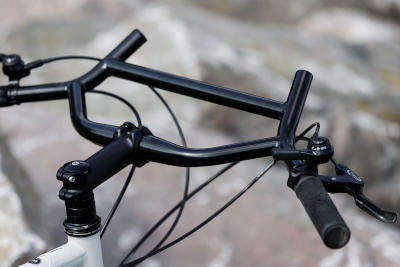
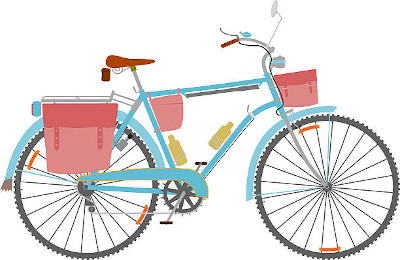
Use a rack or bags attached to the bike to haul gear. Getting gear off your back makes it more comfortable to bike and easier to look around. Carry Voile straps or bungee cords to secure items so they can’t fall off. A front basket is another good option.
Wear a helmet. If only to prevent skids on pavement, but also because your brain needs all the help it can get. Use MIPS or wavecel helmets that cushion the impact and help with rotating decelerations. Don’t attach heavy items to it, though a light can be a good idea. Put reflective stickers on the helmet or choose the fluorescent color scheme.
Protect your eyes. During the day, wear polarized sunglasses to cut down on glare from glass. At night, wear clear glasses to keep bugs out.
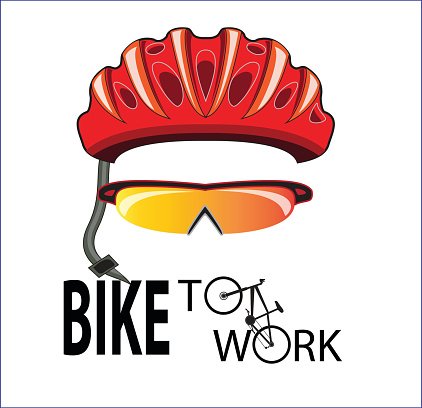
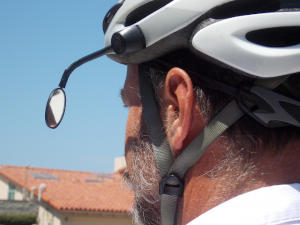
Use a rear view mirror on your helmet. It takes a bit of getting used to, but being able to see behind you without contorting your body or diminishing your forward situational awareness is a huge upgrade.
Film everything in front and behind with cameras that can detect crashes. A GoPro works in a pinch, but has limited battery life and no circular mode, so once the storage fills up, the recording stops. Try to find a camera made for crash documentation, like a dashcam for motorcycles. The Cycliq Fly cameras are made for bicycles, but I’ve had mixed results with them: the hardware is excellent but the firmware and app are lacking.
Use a bell or call out when overtaking someone on a shared-use path. A “brrring” bell is more friendly than a “ding” bell, but I like the Spurcycle despite the shrill tone. On off-road paths, a bell like the Timber that rings continuously (like a cow bell) is useful for keeping your hands in control of the bike. If you do call out, don’t say phrases containing the words “left” or “right” as you pass, because this might cause the person to move unpredictably because they mishear it. Just say something like “passing” or “approaching” and don’t pass too quickly.
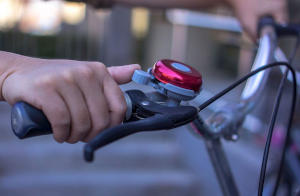
To check out more bike gears, please visit my blog Kona Rove DL bicycle and browse the list of Bicycle gear companies that have a good reputation for durable equipment. Hope this article will equip you and your bike to make your ride safer.
